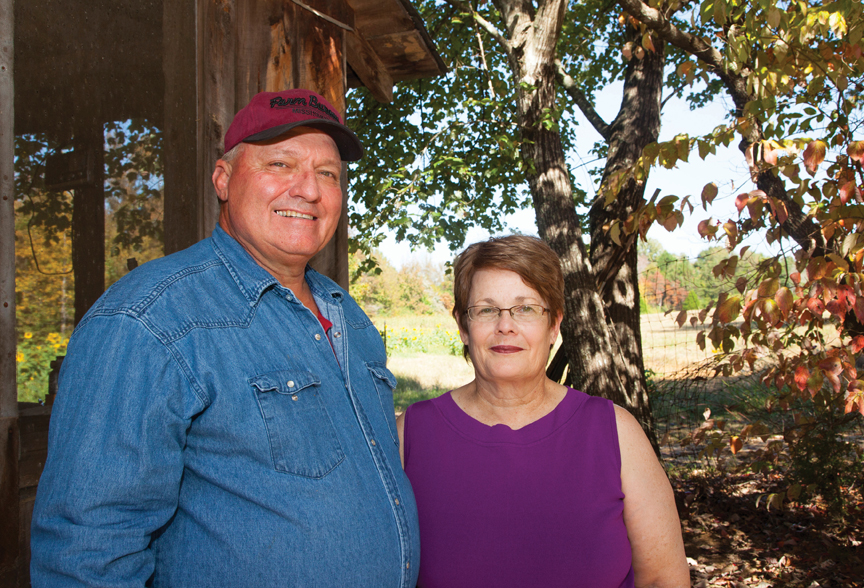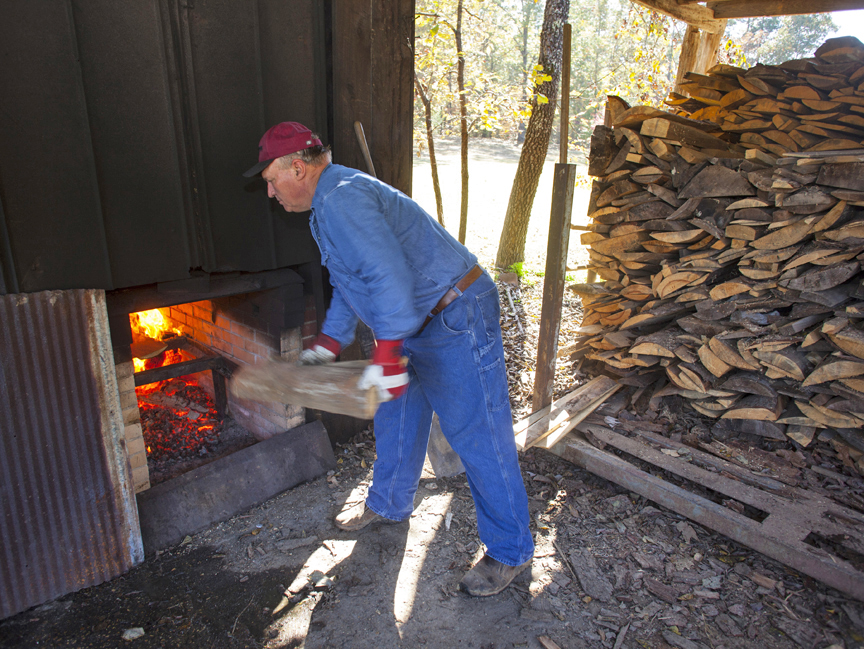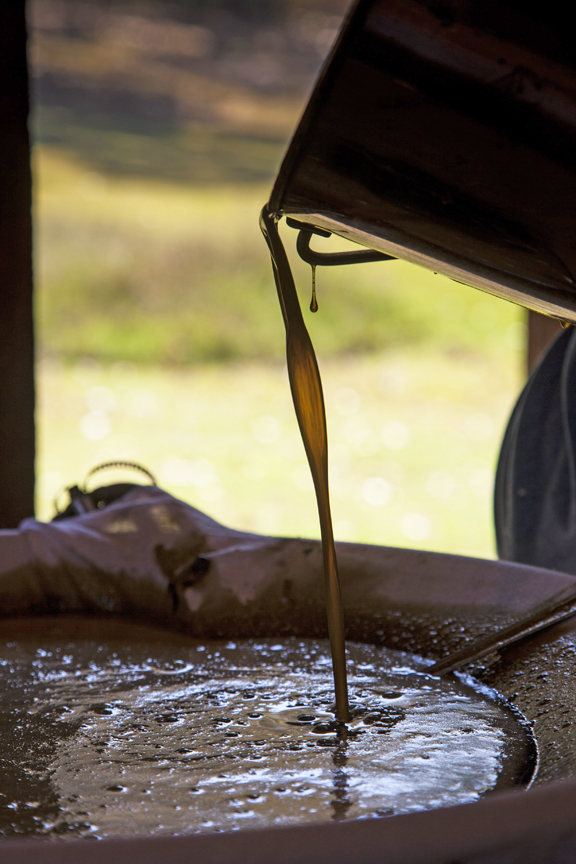See related article:

When the days get shorter and the leaves begin to turn, that's when you're likely to find Terry and Deb Norwood producing sweet sorghum syrup at their north Mississippi farm.
Photos by Debra Ferguson/Southern Images

A member of the grass family, sweet sorghum produces a juice that can be cooked down to syrup with a flavor similar to molasses.

Around Labor Day, Terry Norwood begins checking the sorghum's sugar content, either with a refractometer or the old-fashioned way: "I was taught to watch the seed heads. When you can mash the seed and it looks like dough, the sugar is about at its peak in that stalk. That's when we've got to be ready to roll."

Terry has an affinity for antique machinery and labor-saving modern methods, and starts the harvest by deheading the tall canes with a sickle mower mounted on an adjustable hydraulic lift. M81E is a tall sorghum variety grown for its sweet juice rather than its grain

Next Terry cuts the sorghum with an antique corn binder, which automatically ties it into easy-to-handle bundles.

Terry brings a century-old cane mill to the field to crush the sorghum, then transports the juice back to his production area. He chills the juice in a refrigerated milk tank until he has a day off to cook.

Back at the cooking shed, Terry feeds the firebox with pine slabs.

A brick channel runs under the 12-foot-long cooking pan, heating the juice to a boil. "It draws the flame all the way from the firebox to the other end of the pan," Terry says. "You can see the fire shooting by, and hear it roaring through the chimney."

The Norwoods' streamlined harvest process saves countless hours, but one thing you can't rush is the cooking. It takes about six hours to cook one batch of sweet sorghum syrup, a process the Norwoods repeat from Labor Day to first frost. Fans draw the steam off the boiling juice.

Sweet sorghum syrup enters the long pan as fresh green juice and exits after it cooks down to a rich amber liquid. "It's a continuous flow," Terry says. "What you're doing is pan management. You're never letting more in than you can cook at a time."

Still boiling, some of the syrup is almost ready for bottling.

Terry strains and cools the hot syrup. "The longer it cooks, the darker it gets," he says. "That bright syrup is beautiful. The only way to keep it like that is to cool it."

The Norwoods bottle and sell their sweet sorghum syrup under the Rockyford Sorghum Mill label.

Photos by Debra Ferguson/Southern Images